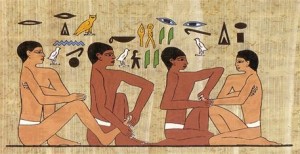About Reflexology
What is Reflexology?
Reflexology is a non-invasive and effective healthcare treatment based on the principle that there are reflex points throughout the feet, hands and outer ears that correspond to every system, organ and gland in our bodies. By manipulating the nerves in the feet, hands and outer ears, reflexologists can reduce issues in various parts of the body to improve health and reduce stress.
How Does Reflexology Work?
When your reflex points are accessed using specific thumb, finger and hand techniques, nerve pathways are stimulated, circulation is increased and congestion is cleared, allowing the body to relax and resume a natural state of balance (called homeostasis).
What Can Reflexology Do for Me?
Reflexology can enhance overall relaxation, bring internal organs and their systems into a state of optimal functioning, and increase blood supply, which brings additional oxygen and nutrients to cells and enhances waste removal. It improves how circulatory, respiratory, endocrine, immune and digestive systems work in the body. Reflexology helps the body to relieve stress, reduce fatigue and help reduce pain, all naturally.
People of all ages can benefit from reflexology treatments. We all suffer from stress at one time or another, and aches and pains can be part of daily life. Reflexology has a long history of promoting relaxation and healing. Although reflexology is not used to diagnose or cure health disorders, millions of people around the world use reflexology to complement other treatments and address conditions such as stress, insomnia and headaches.
What Are the Some Benefits of Reflexology?
Some of the benefits I have seen clients receive from reflexology include:
-
Deep relaxation and reduction of stress
- Improvement of blood circulation and blood supply
- Improved elimination of harmful toxins and waste products from the body
- Boosting of the Immune system
- Reduction of Pain levels
- Improved sleep patterns and energy levels
- Encouragement of the body's healing properties
- Restoration of natural balance to the body
What's the Difference Between Reflexology and Massage?
The main difference between these two therapies is that massage works directly on the muscles and connective tissue, while reflexology works through the nervous system. In general, massage uses flowing movements applied with a flat hand, whereas reflexology uses a specific technique of applying pressure with the thumb (called "thumb walking") or fingers. This focused, pulsing thumb technique is said to soothe the nervous system and ease pain.
Another way of understanding the difference is that massage works from the outside in and reflexology works from the inside out. Since both therapies are complementary, many people get added relief by combining them.
What's the History of Reflexology?
Reflexology has roots that date back as far back as 200 BC in China. It was depicted in hieroglyphics in Egypt around the same time. The reflexology that I studied originated in the 20th century by four medical professionals. In the early 1900s, Dr. William FitzGerald - an ear, nose and throat specialist - wrote a book titled "Zone Therapy." He shared his exciting results with Dr. Shelby Riley, who expanded the theory. He, like Dr. FitzGerald, believed that continual pressure on the reflex - or point of contact - could help decrease pain in patients.
Eunice Ingram - a physical therapist who worked with Dr. Riley - was fascinated with the concept of Zone Therapy. With the doctors' encouragement, she developed her own foot reflex theory in the early 1930s and published the book "Stories the Feet Can Tell," where she documented her cases and carefully mapped out the reflexes on the feet, which is how reflexology in the United States is known today. Eunice Ingram is known as the "mother of reflexology."






